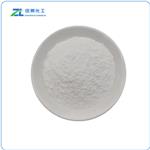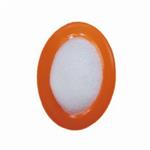Chemical Properties
white crystalline powder
Uses
DL-3-Hydroxybutyric acid sodium salt has been used in a study to understand the effect of butyrate on fibroblast growth factor 21 (FGF21), which is involved in fatty acid ?-oxidation in liver. It may be used in the preparation of poly(3-hydroxybutyrate).
Uses
Optically active 3-hydroxybutyric acids are key intermediates of the biosynthesis and metabolism of fatty acids and exist widely in biological systems.
Application
DL-β-Hydroxybutyric acid sodium salt has been used:
as a standard for quantifying blood plasma and milk β-hydroxybutyric acid in Danish Jersey cows.
to investigate its anticonvulsant effects in epilepsy induced rats.
to induce hyperketonemia in Holstein dairy cows.
Definition
ChEBI: An organic sodium salt resulting from the replacement of the proton from the carboxy group of 3-hydroxybutyric acid by a sodium ion.
Biological Functions
Neuroprotective compound in experimental models of neurodegenerative diseases. Shown to be oxidized as an energetic substrate in the brain during starvation. May inhibit brain glucose oxidation, which may account for the suppression of hepatic glucose production observed after administration of ketone bodies in humans.
Biochem/physiol Actions
β-Hydroxybutyric acid is a ketone body present in the rumen epithelium of liver cells. Its interconversion to acetoacetate influences the acid-base balance and is coupled NADH generation from (nicotinamide adenine dinucleotide) NAD+, measured fluorimetrically. A high plasma level of β-hydroxybutyric acid is implicated in diabetic ketoacidosis. It traverses the blood-brain barrier as a monocarboxylic acid. β-Hydroxybutyric acid may play a protective role in dopaminergic neurodegeneration in Parkinson′s disease model. β-Hydroxybutyric acid is a ligand for G protein-coupled receptor(GPR109A) and favors inhibition of secretion, transcription and translation of growth hormone (GH) and prolactin (PRL) gene in cow anterior pituitary cells (DCAPCs).





